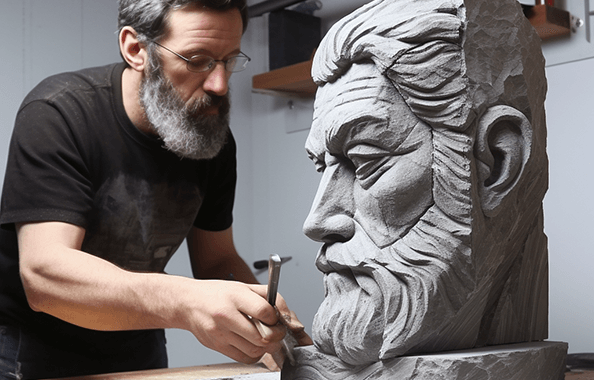Carving a granite sculpture is a challenging and rewarding endeavor that allows you to transform a solid block of stone into a work of art. Granite, known for its durability, texture, and captivating beauty, has been used in sculpture for centuries. Whether you are a seasoned sculptor or a beginner, this article will guide you through the essential steps and techniques to create your own granite masterpiece.
Materials and Tools
Before you begin, gather the necessary materials and tools:
- Granite Block: Choose a suitable granite block. It should be free from cracks and flaws and match your envisioned sculpture’s size.
- Safety Gear: Wear safety glasses, a dust mask, and ear protection to safeguard your health while working with granite.
- Chisels and Hammers: Various chisels and hammers are used for shaping granite. The primary types include tooth chisels, flat chisels, point chisels, and round chisels.
- Grinders and Sandpaper: Angle grinders equipped with diamond blades or carbide-tipped tools will help you shape and smooth the stone. Different grits of sandpaper will be useful for finer finishing.
- Stone Files: These are handy for refining details and smoothing rough edges.
- Ruler and Calipers: These are necessary for taking precise measurements and ensuring symmetry in your sculpture.
- Wooden Mallet: Use a wooden mallet to strike the chisels, as it is less likely to damage the tools or the granite compared to a metal hammer.
The Carving Process
- Design and Plan:
- Start by sketching your design on paper and create a model or template.
- Visualize the final sculpture and plan the sequence of carving steps.
- Ensure that the design takes into account the granite’s natural features, such as color and texture.
- Safety Precautions:
- Wear appropriate safety gear to protect your eyes, ears, and lungs.
- Work in a well-ventilated area to minimize dust exposure.
- Rough Shaping:
- Begin by roughly shaping the granite with a large chisel or angle grinder.
- Remove unnecessary stone to create the basic form of your sculpture.
- Detailed Carving:
- Progress to finer chisels for detailing and defining the features of your sculpture.
- Pay attention to symmetry and proportion.
- Smoothing and Polishing:
- Use progressively finer sandpaper to smooth the surface.
- Consider using a polishing compound or wet polishing process to achieve a high-gloss finish.
- Finishing Touches:
- Use stone files to refine intricate details.
- Remove any remaining tool marks and imperfections.
- Preservation:
- Apply a stone sealer to protect the sculpture from environmental elements.
Tips for Success
- Patience is key when carving granite. Take your time and work gradually to avoid making irreversible mistakes.
- Continuously evaluate your progress and compare it to your initial design to ensure you stay on track.
- Practice on smaller pieces of granite before attempting larger, more complex sculptures.
- Keep your tools sharp and well-maintained for better results and to minimize the risk of accidents.
- Work in a clean and organized space to minimize dust and debris.
Conclusion
Carving a granite sculpture is a meticulous and rewarding craft that requires skill, precision, and a deep appreciation for the stone’s inherent beauty. Whether you’re a beginner or an experienced sculptor, with the right materials, tools, and techniques, you can transform a solid block of granite into a stunning work of art. Embrace the challenge and enjoy the process of creating your own masterpiece from nature’s enduring canvas.


